CarEdge saved me over 4,500 dollars on a brand new Honda Pilot. I can't say thank you enough.
Price intelligence
Find a wide range of vehicle listings with market insights on new and used listings near you.


Help us personalize your CarEdge experience — it only takes a second.
Your answers help us personalize your CarEdge journey — we’ll follow up with tips and next steps that match your buying timeline.
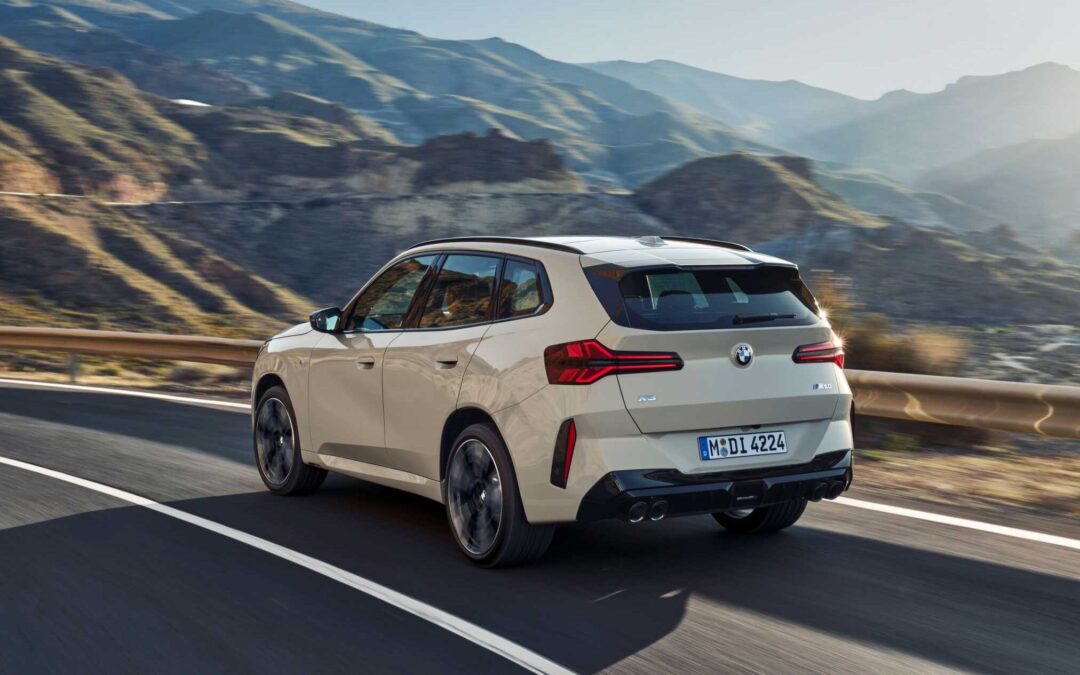
If you’re planning to buy or lease a car soon, don’t let October slip under the radar. While everyone else is marking their calendars for December, deals are here that rival expectations for year-end car sales. We’re talking 0% APR financing, lease payments that won’t eat your monthly budget, and cash incentives that look like a typo.
Here’s the thing: automakers are already in clearance mode. They’re not waiting until December to get started with serious incentives. They’re staring down packed lots and deliveries of next year’s models, which means October has become the soft launch for discount season. Welcome to a buyer’s market, at least for some makes and models.
Here are the 10 best new car deals in October 2025.

0% APR financing for 72 months
This isn’t just the best truck deal of October, it’s the strongest financing offer across the entire market. A six-year loan at 0% interest means buyers save thousands compared to typical rates. If a Ram pickup is on your radar, this is the month to make your move. Ford and GM can’t match this deal, at least not yet. December may change that.
👉 Browse Ram 1500 listings near you, and see offer details.
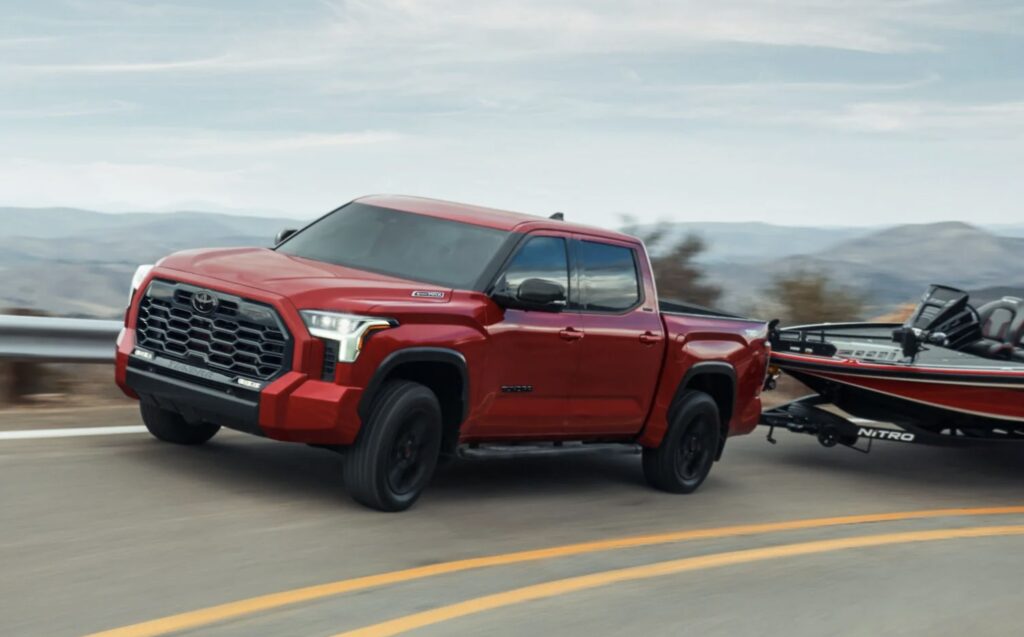
1.75% APR financing for 72 months
Toyota almost never offers low-interest financing, because its trucks usually sell just fine without incentives. That’s what makes this Tundra deal stand out — 1.75% APR for six years is a rare chance to save. Toyota’s incentives are notoriously regional in nature, so be sure to check your local offers.
👉 Search Toyota Tundra deals near you, and see Toyota offer details.

0% APR financing for 60 months
Nissan is keeping its zero-percent financing streak alive for a third straight month. With global financial struggles putting pressure on the brand, Nissan is leaning heavily on U.S. buyers to stabilize sales. Shoppers benefit with no-interest loans on three of Nissan’s most popular SUVs.
👉 Find Nissan offers near you, and see Nissan offer details.

0% APR financing for 60 months
Mitsubishi just joined the short list of automakers offering interest-free financing across all 2025 models. From the Outlander to the Eclipse Cross, every vehicle qualifies for five years of free money. That’s worth thousands in savings over the life of the loan.
👉 Browse Mitsubishi inventory near you, and see offer details.

0% APR financing for 60 months
GM wants to stay ahead of Ford in the EV race, and it’s extending its 0% APR special for a fourth month. The Equinox EV is America’s best-selling non-Tesla EV, with 8,000+ sold in September. Buyers of the higher-priced Silverado EV stand to save the most with interest-free financing. The new Trail Boss spec is proving to be a popular electric truck.
👉 Browse Chevy deals near you, and see offer details from Chevrolet.

1.9% APR for 63 months, or lease for $249/month (36 months, $2,748 due)
The Crosstrek has quickly become Subaru’s best-selling model in the U.S., and October brings your chance to score a deal. Buyers can choose between low-APR financing or a competitive lease at just $249/month — perfect timing as winter approaches.
👉 Check Subaru Crosstrek listings near you, and see Subaru offer details.
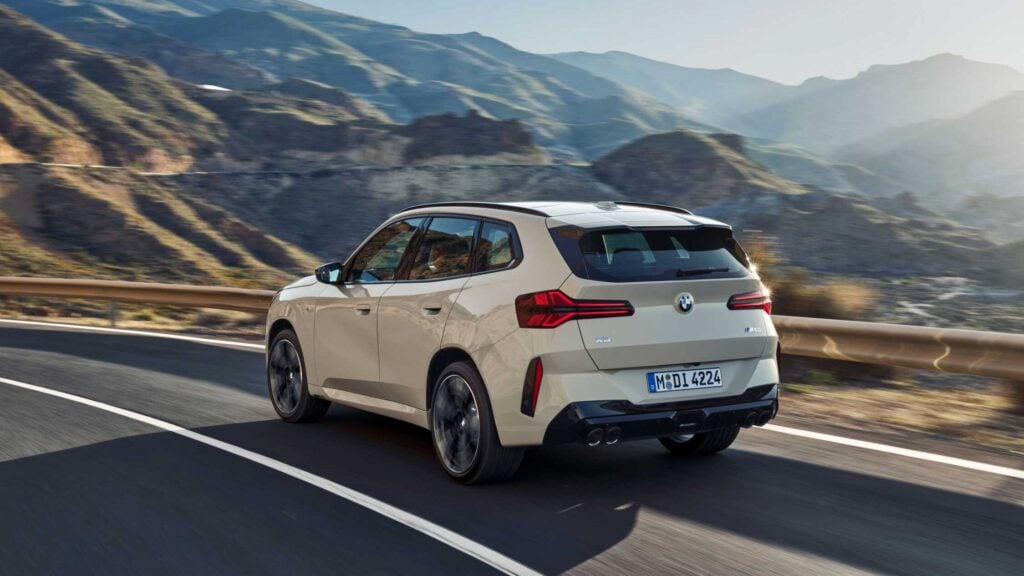
1.99% APR financing for 60 months
Luxury buyers, we didn’t forget about you. In fact, luxury shoppers save the most when financing rates drop. The cost to finance a more expensive vehicle will always be higher. In October, BMW’s popular X3 and flagship X7 are available with 1.99% APR financing for five years. That’s a big win for Beemer fans.
👉 Browse BMW inventory near you, and see offer details.

Lease for $279/month (24 months, $2,499 due at signing)
Buick’s zero-down specials are gone, but the brand continues to lead with competitive lease offers. At just $279/month, the Envista crossover remains one of the cheapest new-car leases in America.
👉 See Buick Envista deals near you, and see Buick offer details.
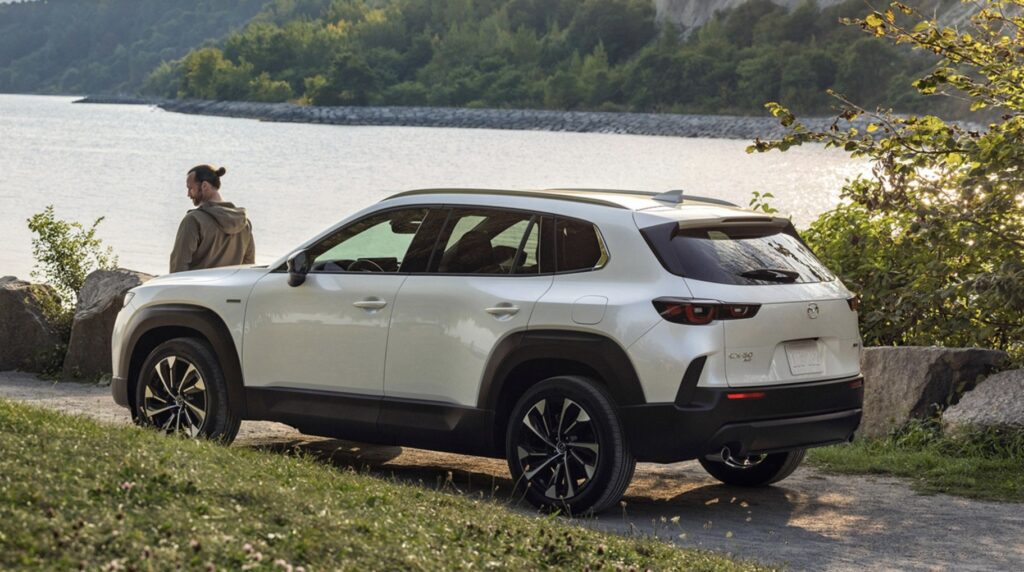
1.9% APR for 60 months
Mazda’s October incentives are mostly lackluster, but the CX-50 offer stands out. With standard all-wheel drive and plenty of ground clearance, this compact SUV is an excellent pick for northern drivers gearing up for winter. It’s even a Top Safety Pick (Plus) winner from IIHS crash testing.
👉 Find Mazda CX-50 offers near you, and see Mazda offer details.

$6,500 cash bonus
Infiniti is pushing hard to win back American buyers, and the discounts show it. The QX50 and QX55 come with $6,500 in retail bonus cash, while the larger QX80 tops the chart with up to $10,000 in incentives this month.
👉 Browse Infiniti listings near you, and see offer details.
October isn’t as deal-packed as year-end sales, but these offers prove it’s still a great month to buy if you shop the deals. Automakers are eager to keep momentum going before November and December’s clearance events bring the biggest discounts of the year. With that in mind, if you don’t see a deal you like, patience will pay off. Year-end clearance sales are just weeks away.
Now, for a dose of reality.
If you’ve bought or leased a car in the past few years, you know that dealers still play games to squeeze an extra penny out of your wallet. Even when the deals look great on paper, buying a car is often still a pain.
The good news? You have a NEW tool at your disposal that simply didn’t exist this time last year. In 2025, car shoppers are letting AI handle the awkward negotiating with salespeople.
👉 Let AI negotiate car prices for you
Prefer to keep it old school? We get it. Start with these FREE car buying resources and Vehicle Research Hub, courtesy of the team of experts here at CarEdge. If you ever get stuck or simply have questions, reach out to us. We’re here to help!

October isn’t just about pumpkin spice and Halloween decorations—it’s also a sweet spot for car deals. New manufacturer incentives are here, and dealers are under pressure to sell aging 2025 models and very dusty 2024s. As always, shoppers who know how to negotiate have the upper hand. Consider it a buyer’s market, but only if you know where to look.
Here are three tips that will help you get the best car deal in October 2025.
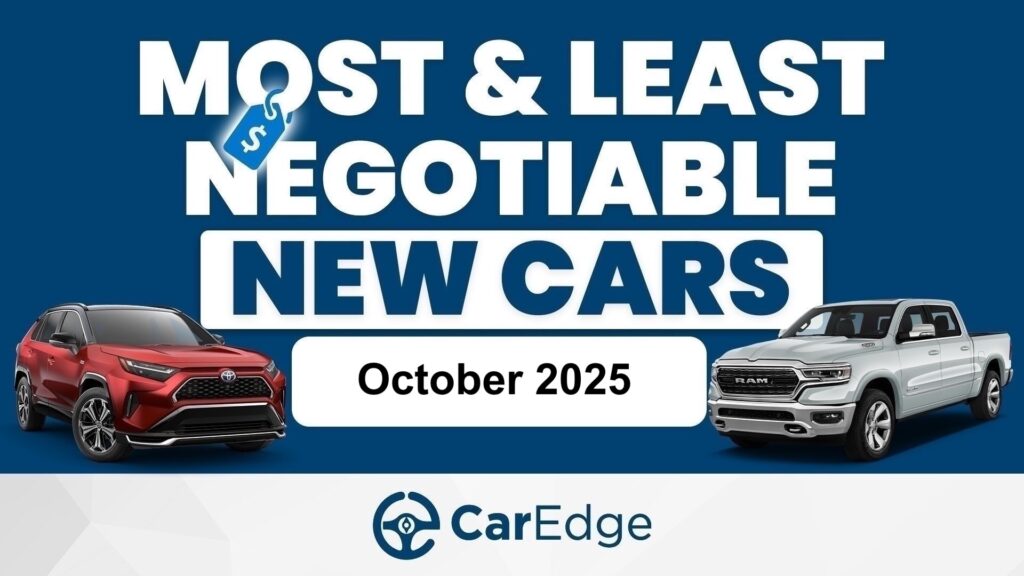
Some cars practically fly off the lot, while others sit for weeks—or even months. Which ones do you think are more negotiable?
Dealers holding onto slow-selling inventory are motivated to move those cars, often with big discounts or extra incentives. That’s where the real deals are hiding.
With CarEdge’s free car buying tools, you can see the fastest- and slowest-selling cars nationally and in your local market. If you’re flexible on what you drive, targeting the slow movers is the easiest way to tilt the odds in your favor.

Leasing isn’t for everyone—but for millions of drivers, it’s the smarter choice. One in five drivers already lease, and that number is climbing as cheap lease deals pop up nationwide.
Here’s why it matters:
Before signing on the dotted line, make sure to check the best-value lease deals available this month, and use our free leasing calculator to know what to expect.
This time last year, it didn’t even exist. Today, it’s a game-changer.
With CarEdge’s new AI Negotiator, shoppers can now have AI agents anonymously negotiate car deals on their behalf. No awkward calls. No pressure from salespeople. Just results.
If you’re shopping for a new car this October, especially as year-end sales season heats up, AI Negotiator can save you time, stress, and money.
👉 Learn more about AI Negotiator, the easiest way to negotiate your deal.
October is a great time to shop for a car, but only if you know where to look. Focus on slow sellers, don’t skip lease deals, and better yet, let AI do the hard work for you. With these three steps, you’ll be in the driver’s seat in no time.
A great place to start is our Best Deals Hub. And if the perfect deal hasn’t shown up yet, don’t sweat it. November brings more incentives, and December is the peak of year-end sales—when automakers throw everything they’ve got at clearing out old inventory.
Stay tuned to CarEdge Guides for the best year-end car deals of 2025 as automakers make one last big push to ‘move the metal’. We’re here to help!

Buying a car is a big deal, and it’s normal to have a lot of questions. Whether you’re a first-time buyer or have been through the process before, knowing what to ask can make everything a lot smoother. Here are some common questions every car dealer should be prepared to answer, so you can feel confident and informed about your purchase. Remember, knowing the right questions to ask when buying a car can make all the difference. Knowledge is power when it comes to buying a car in 2025!

Why it’s important: One of the most important questions to ask when buying a car is about the total price, commonly referred to as the ‘Out-the-Door Price’. Knowing the OTD price, including taxes, fees, and any add-ons, helps you understand the full financial commitment. A reputable dealer should provide a clear breakdown of these costs. Try our free Out-the-Door Price Calculator to get a feel for the numbers to expect.
Why it’s important: First of all, knowing how long a specific VIN has been waiting for a buyer gives you an instant snapshot of the negotiability. The longer a car sits, the more car dealers are willing to cut you a deal. Dealerships finance their inventory, and these ‘floorplanning costs’ add up quickly in today’s high-interest environment.
👉 Unlock days on the lot, market supply data, and local price trends with CarEdge Pro, now including invoice prices!

See the best new car incentives this month!
Why it’s important: Understanding the available APR offers, cash discounts and rebates, or lease specials can help you make an informed decision. Sometimes, the salesperson may not mention all offers unless you inquire. Asking about what incentives are available and when they expire is one of the essential questions to ask when buying a car.
Why it’s important: A test drive allows you to experience the car’s performance, comfort, and features firsthand. A reputable dealer will always allow a test drive, giving you the chance to ensure the car meets your expectations. No test drive? No deal!
Why it’s important: Understanding the terms of the warranty is essential for knowing what is covered and for how long. Asking detailed questions about the warranty coverage, including any exclusions and the duration of the coverage, can help you make an informed decision.
It’s important to ask 1) who the extended warranty is managed by (for example Fair, AUL, Endurance, or one of the other companies), 2) the duration of the coverage (mileage and time period), 3) covered components (the details matter, feel free to ask for the contract), 4) the deductible amount if you file a claim, and 5) if roadside assistance is included.
Before you agree to any coverage, compare your offer to CarEdge’s Extended Warranty, backed by Fair’s trusted coverage.
Why it’s important: For used cars, a vehicle history report includes information about accidents, repairs, and previous ownership. This report is crucial for assessing the car’s condition and history, making it one of the key questions to ask when buying a used car.
If you’re shopping at a dealership, never pay for this report. It should be offered free of charge. If it’s not available, that’s a red flag! We’d advise you to look elsewhere, no matter how ‘perfect’ the car seemed.
Why it’s important: Having the car inspected by an independent mechanic is especially important for used cars. The industry term for this is a Pre-Purchase Inspection (learn more about PPIs here). This inspection can reveal any potential issues that may not be apparent during a test drive.
If the dealer shows any hesitation about letting you get the car inspected by an independent mechanic (ie one that’s NOT working at the dealership), there may be something they’re hiding. What good is a used car if you end up needing thousands of dollars in maintenance when you drive it home?
Q: What is the Out-the-Door Price?
A: The out-the-door (OTD) price includes the vehicle’s sticker price plus taxes, dealer fees, and any add-ons. Always ask for this number to understand your total financial commitment. Try CarEdge’s free Out-the-Door Price Calculator to see what to expect.
Q: How long has this car been on the lot?
A: The longer a car sits, the more negotiable it becomes. Dealers pay financing costs (floorplanning), so vehicles on the lot for months often come with better discounts. CarEdge Pro reveals days on lot, invoice pricing, and market supply data. Even better, our AI Negotiator includes these data points and more, without you lifting a finger.
Q: What manufacturer or dealer incentives are available? Can I stack them?
A: Cash rebates, APR offers, and lease specials can save you thousands, but not all salespeople will mention them upfront. Ask about current offers, expiration dates, and whether they stack. See the best new car incentives this month at the CarEdge Best Deals Hub.
Q: Can I take the car for a test drive?
A: Of course! If any seller dares to say no, that’s an immediate dealbreaker. A test drive helps you evaluate comfort, performance, and features. If a dealer or private seller refuses, that’s a red flag. No test drive? No deal.
Q: What are the terms of the warranty?
A: Ask about who manages the coverage, how long it lasts, what’s included, the deductible, and if roadside assistance is covered. Compare the dealer’s offer with CarEdge’s Extended Warranty backed by Fair, so you know you’re protected.
Q: Can I see the vehicle history report? (For used cars)
A: This report shows accidents, ownership history, and major repairs. Dealers should provide it for free—if they won’t, walk away. It’s a must-have when buying used.
Q: Can I get the car inspected by an independent mechanic? (For used cars)
A: A Pre-Purchase Inspection (PPI) can uncover hidden issues. If a dealer hesitates to allow one, take that as a warning sign. Spending a little upfront could save you thousands in surprise repairs. Learn how PPIs work.

Navigating the car buying process can be overwhelming, but equipping yourself with these questions to ask when buying a car can help you feel more confident and informed. Understanding the OTD price, days on the lot, incentives, and other crucial details ensures you make a smart buying decision
Tired of car shopping hassles? Let us handle it for you with our CarEdge Concierge service. Our experts will find the perfect vehicle, negotiate the best price, and take care of all the details, saving you time and money. Learn more about CarEdge Concierge, the #1 car buying service in America.
NEW in 2025: Welcome to the future of car buying. Let CarEdge’s AI Negotiator do the talking, and watch the out-the-door price fall in real time! Here’s how it works.
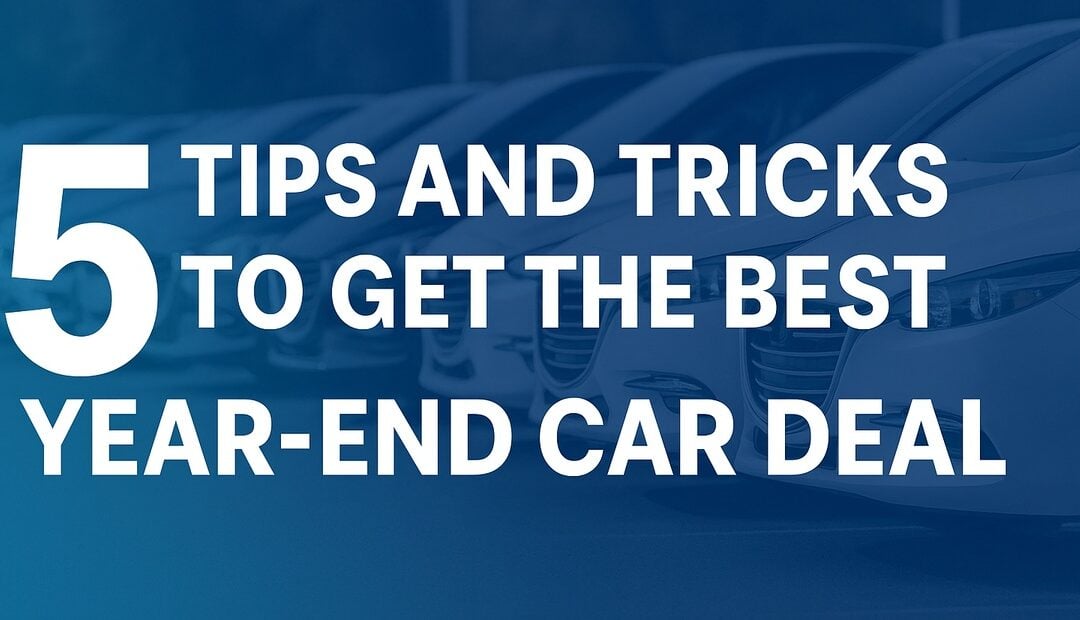
Year-end car shopping is a goldmine for savings, but only if you know how to approach it. We’re glad you found us, because you’ve come to the right place. Dealers and automakers are under pressure to hit sales targets, clear out old inventory, and start the new year strong. That means zero percent financing, cash discounts, and motivated salespeople.
We spoke to CarEdge Co-Founder and auto industry veteran Ray Shefska to see how the pros do it. Here are five tips and tricks to help you get the best year-end car deal in December of 2025. The best time of the year to buy a car is finally here.
The best time to buy a car is late in the day, late in the month, and especially in December. The final days of the month tilt the odds in your favor as sales teams scramble to meet quotas. December is a double-whammy, as dealers and automakers try to meet both annual and quarterly sales goals.
But there’s another overlooked factor: the day of the week. Most shoppers pack dealerships on weekends, which leaves you competing for attention. CarEdge Co-Founder and 44-year industry veteran Ray Shefska puts it plainly:
“The best day to buy? Wednesday. Traffic is light, and if you show you’re serious about buying that day, you’re more likely to find a motivated salesperson ready to make a deal.”
Here’s a real-world example: A CarEdge member in Ohio reported saving several hundred dollars off MSRP just by coming in on a Wednesday near the end of December. The salesperson admitted they were behind on their monthly goal and “needed the sale.” See the latest success stories, or share your own, at the CarEdge Community Forum.
Go when the dealership is quiet and the clock is ticking. That’s when you’ll find sales staff most motivated to say “yes.”

Dealers are trained to ask early if you’re paying cash, financing, or trading in. The goal? To use that info against you, reshuffling numbers to maximize their profit. If you reveal your plan too soon, you give them the upper hand.
Instead, keep the conversation focused on one thing: negotiating the lowest Out-the-Door Price for the vehicle. Once that’s nailed down, only then should you bring up financing or trade-ins. Treat each as a separate transaction.
Real-world example: A California buyer went into a Honda dealership intending to trade in a 2019 CR-V. By waiting until after securing the lowest OTD price on the new car, they avoided the dealer blending trade-in value into the deal. The result? They saved an additional $1,500 compared to the dealer’s first “package offer.”
Keep your cards close until the price is locked. It’s one of the simplest tricks that saves buyers thousands.

Most buyers know about cash rebates and low APR financing, but fewer realize how often you can combine multiple incentives, from loyalty cash to regional bonuses. Some automakers even offer hidden discounts for groups like first responders, military, educators, or recent grads.
The trick is to ask the dealer to show you every incentive you qualify for, including the ones they might not advertise.
Real-world example: Last month, a shopper buying a Chevy Equinox combined a $1,000 loyalty incentive with a $750 regional bonus and a $500 educator discount, on top of a $2,000 cash rebate that was advertised nationally. It can’t hurt to ask!
Don’t just settle for what’s listed online. Dig deeper, ask questions, and stack those offers to shrink your out-the-door price.

In 2025, leasing remains popular for models that depreciate quickly, like EVs and luxury cars. If your lease is ending around year-end, don’t assume you have to start fresh with a new deal. You have several options to consider. Sometimes, buying out your lease is the smarter move, especially if your residual value is lower than today’s market prices.
Another option is rolling into a new lease with extra perks. Dealers may throw in loyalty cash or waive fees to keep you with the brand. If you’re just one to three months away from the end of your lease, ask if there are any lease loyalty perks for rolling into a new lease, either now or when your lease ends.
Real-world example: A few years ago, Tesla lessees found that buying out their Model 3 leases was cheaper than trying to lease or finance a new one after used Tesla prices spiked. Meanwhile, BMW dealers offered up to $1,500 in loyalty cash for customers ending a lease and starting a new one before December 31.
Consider ALL of your lease-end options. Year-end deals apply here too, and sometimes they’re the best deals of all.
Walking into a dealership blind is a mistake. Inventory levels, selling rates, and local price trends tell you everything you need to know about a new or used car’s negotiability. Your understanding of the local market can make or break your negotiating leverage. Luckily, new tools exist in 2025 that the last generation of car buyers could have only dreamed of.
Knowledge is power. CarEdge Pro makes it simple to check which cars are overpriced or negotiable in your area before you ever step foot in the showroom. Armed with data, you control the conversation.
Or, better yet, have your personal AI Negotiator handle it all for you. From negotiating with thousands of local market data points to effectively talking the price down, over 3,000 shoppers have saved money with CarEdge AI. Try the NEW easiest way to negotiate car prices.
Q: When is the best time to buy a car?
A: The best car deals of the year arrive in the latter half of December, especially from December 20–31. Dealers and automakers are racing to hit end-of-month and year-end sales targets, which makes them more flexible on pricing. If you can, shop mid-week (like Wednesday) when traffic is light, and salespeople are eager to close a deal.
Q: Should I tell the dealer if I’m paying cash or trading in?
A: Not right away. If you reveal your payment method or trade-in plans too early, the dealer can use that information to shift numbers in their favor. Always negotiate the Out-the-Door Price first, then bring up financing and trade-ins as separate discussions.
Q: Can I combine different discounts and incentives?
A: Yes, usually. Many incentives can be “stacked.” Cash rebates, low APR financing, loyalty bonuses, regional offers, and even discounts for educators, first responders, or military members may all apply. Always ask the dealer to show you every incentive you qualify for, even the ones they don’t advertise. When it comes to incentives that often can’t be stacked, those are usually going to be huge cash discounts and low-APR financing offers. Check the fine print on any advertised deals before heading to the dealership.
Q: How do I know if a car is negotiable at year-end?
A: Local market insights provide the best clues. Models with high market day supply are usually negotiable, while fast-selling, low-supply vehicles have less wiggle room. Tools like CarEdge Pro let you see which cars are overpriced, underpriced, or sitting too long on lots in your area, so you know where you have leverage before you step into the showroom. Check out the slowest-selling cars in your area.
Year-end car buying shouldn’t be stressful—it’s your best opportunity to drive home a deal to be proud of. From timing your purchase and stacking incentives, to holding back key details until the right moment, these tips are guaranteed to give you the upper hand when it matters most.
And remember: the best negotiator is the one who comes prepared. With CarEdge, you can see which cars are overpriced, which are negotiable, and how much room is left in the deal—so you walk into the dealership with confidence, and walk out with savings. Or, you can have your anonymous, personal AI negotiator do it all for you.
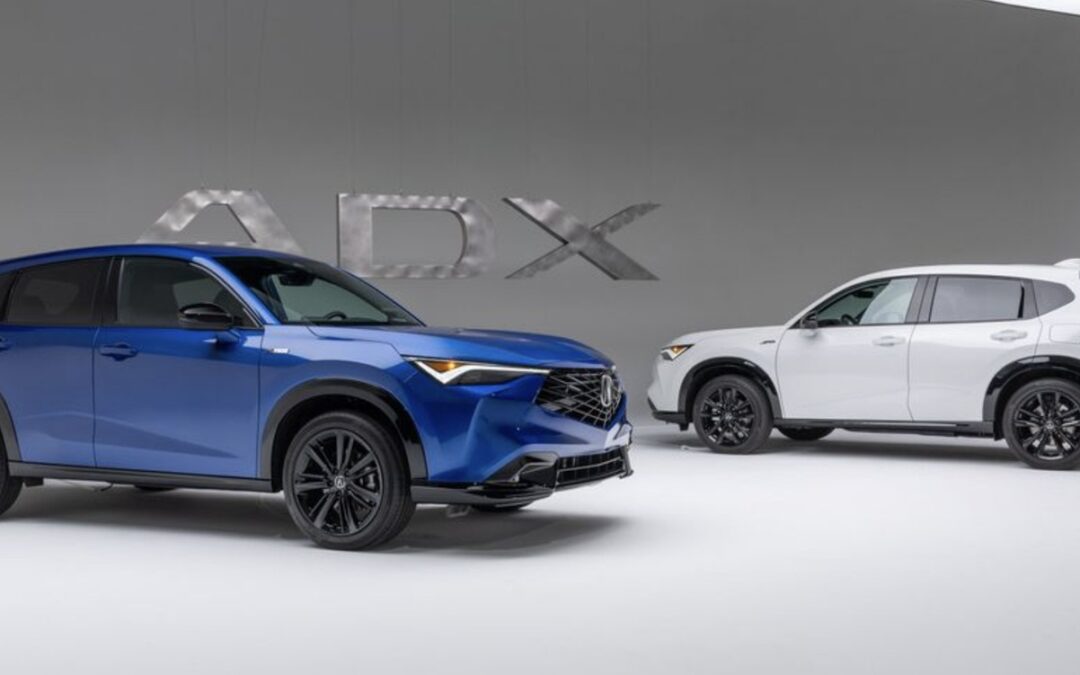
If Halloween decorations filling store shelves are any sign, fall is here — and automakers are getting an early start, too. October incentives are already rolling out, even though September isn’t over. Acura, Honda, and Volkswagen have all dropped their October offers ahead of schedule, giving buyers a jump on low-APR financing and competitive lease deals.
Here’s a look at the top offers announced so far. All of these deals are valid through November 3, 2025, unless otherwise noted.
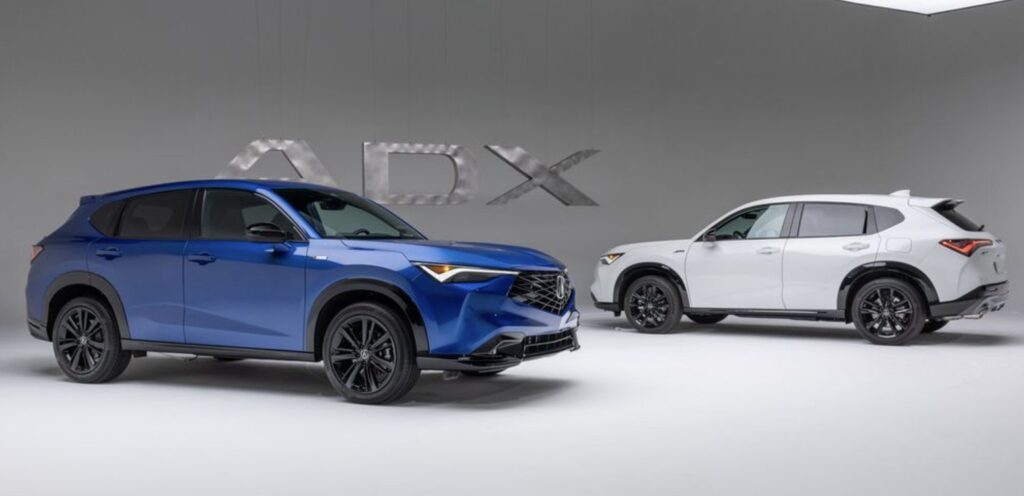
Acura is leaning into affordable financing this fall, with rates well below the national average. According to Cox Automotive, the average new car loan APR is 9.43%, although buyers with credit scores over 760 average 5.50% as of September 2025.
Acura rarely matches luxury rivals on incentives, but 3.99% APR for the ADX stands out. The Integra lease is competitive for shoppers looking at entry-level luxury leases.
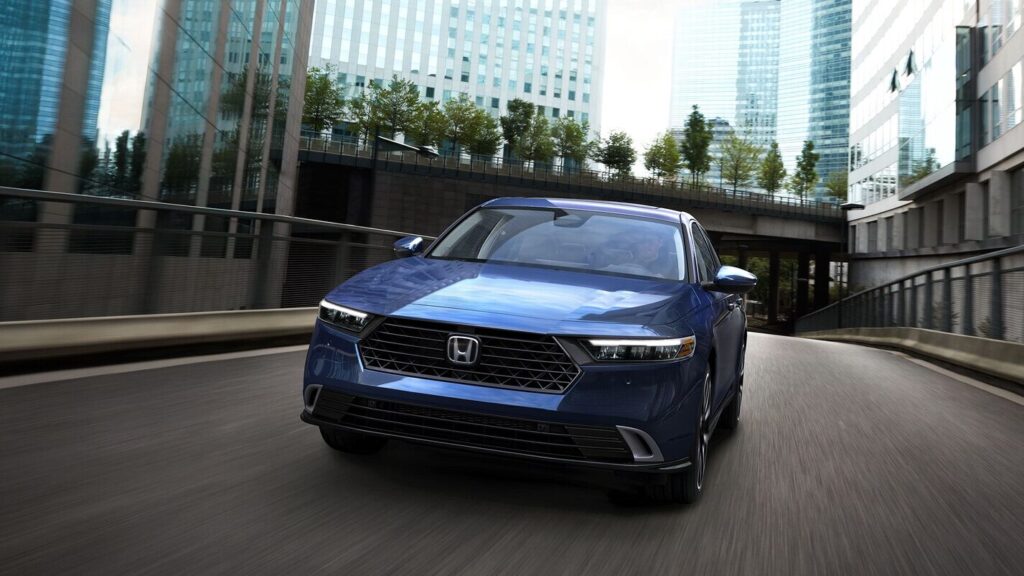
Honda continues to outdo Toyota when it comes to incentives. All of these Honda deals are good through October.
Honda’s Prologue offer is a great deal, especially with the soon-to-expire federal EV credit. If you’re considering Honda’s first all-electric SUV, September 30 is the deadline to lock in maximum savings.
Otherwise, Honda doesn’t have to offer big incentives since their cars usually fly off dealer lots. With that said, the Accord and CR-V have great APR offers for October.

Volkswagen is pairing low APRs with bonus cash for its larger models while keeping leases affordable on entry-level crossovers.
The Atlas deal is flexible, letting buyers choose between low-interest financing or a hefty cash rebate. Just note: VW’s EV deals on the ID.4 and ID.Buzz end in September, so don’t wait if those are on your list. The ID.4 is made in Tennessee, and does qualify for the vanishing federal EV incentive.
October incentives are off to an early start, but these aren’t the only deals we’ll see. The vast majority of manufacturer incentives will arrive on the first or second of October. With plenty of 2025 models still on dealer lots this late in the year, we expect plenty of zero percent financing, cash discounts, and cheap leases.
Stay tuned to CarEdge as we track every October car deal. Whether you’re eyeing low APR financing, a competitive lease, or cash rebates, we’ll keep you updated with the latest ways to save.
👉 Want to skip the back-and-forth at the dealership? Let CarEdge’s AI Negotiator take care of it all. See how it works.